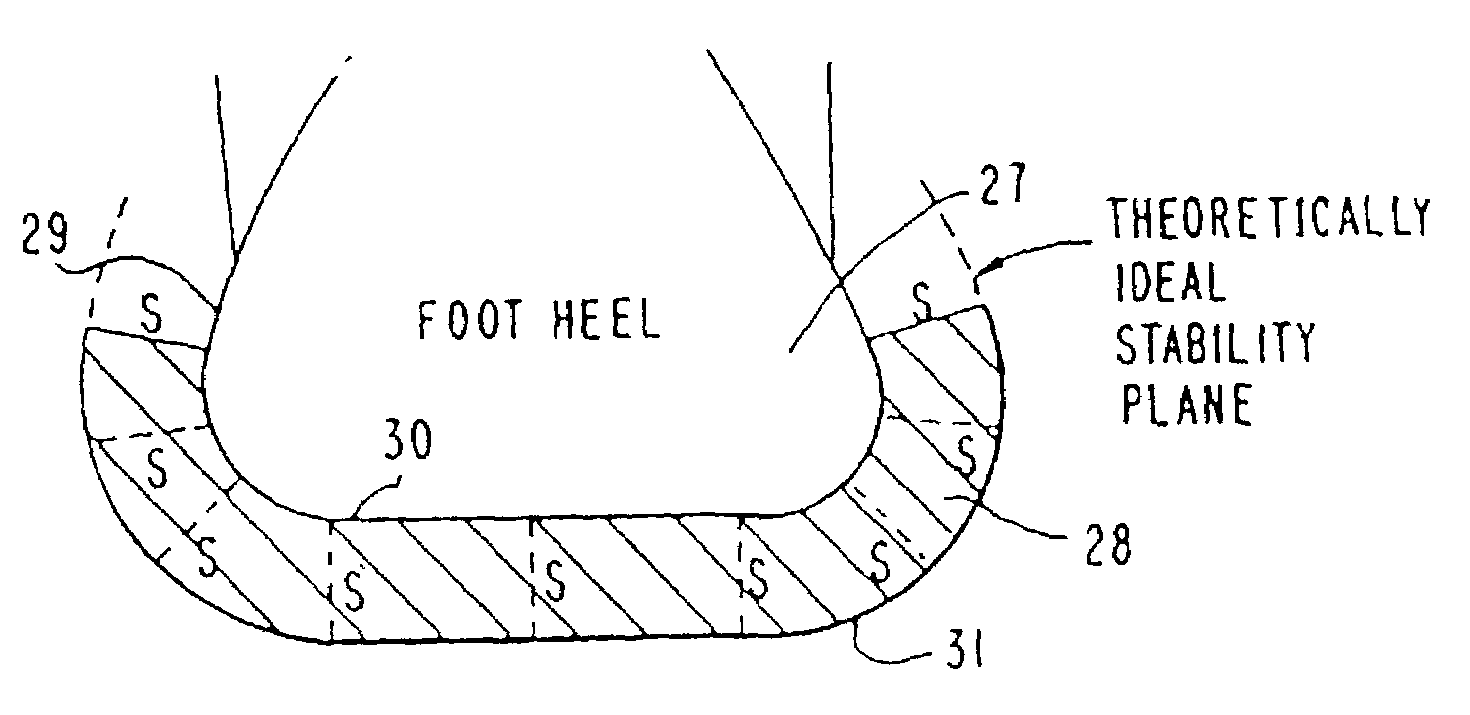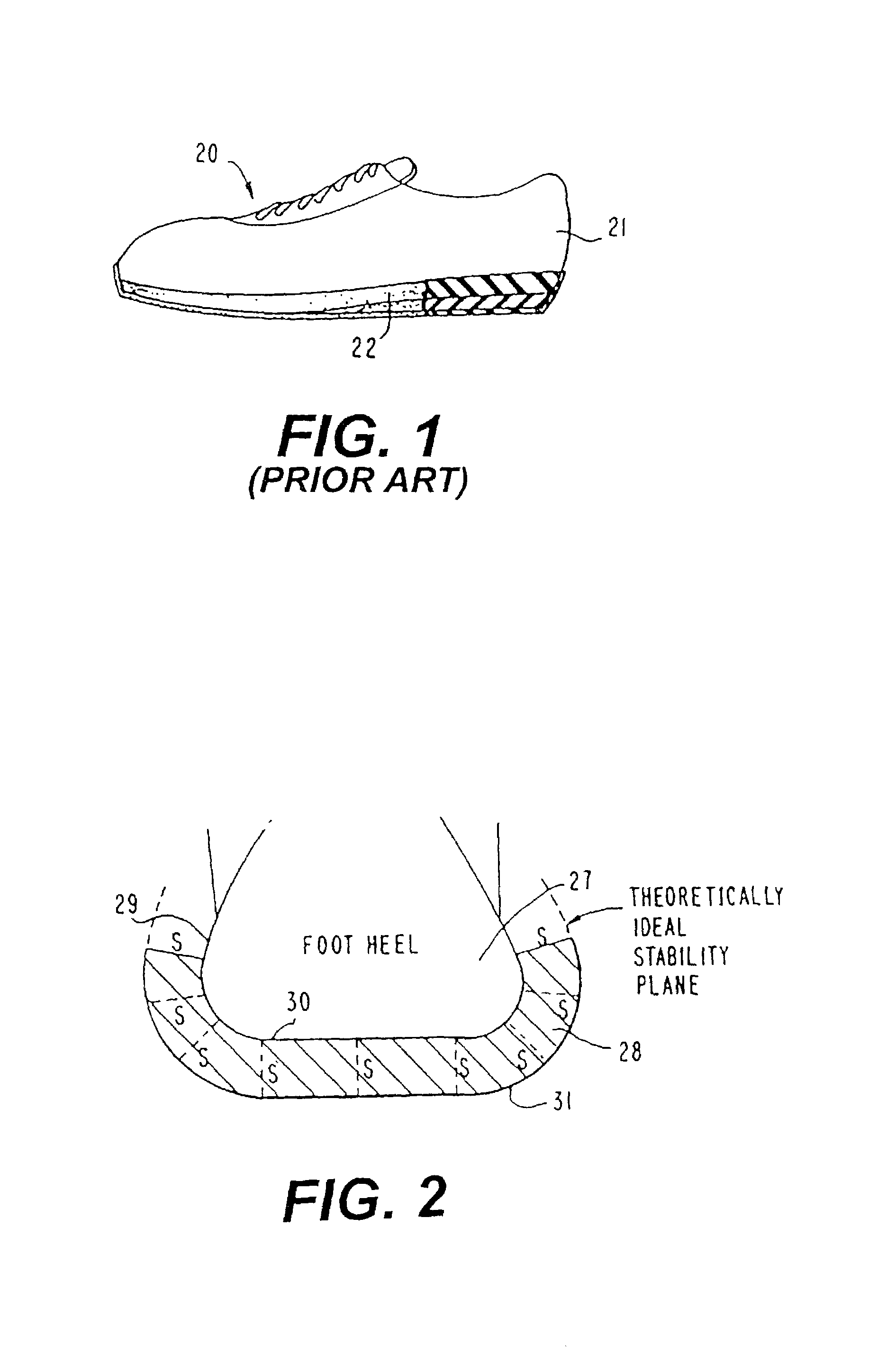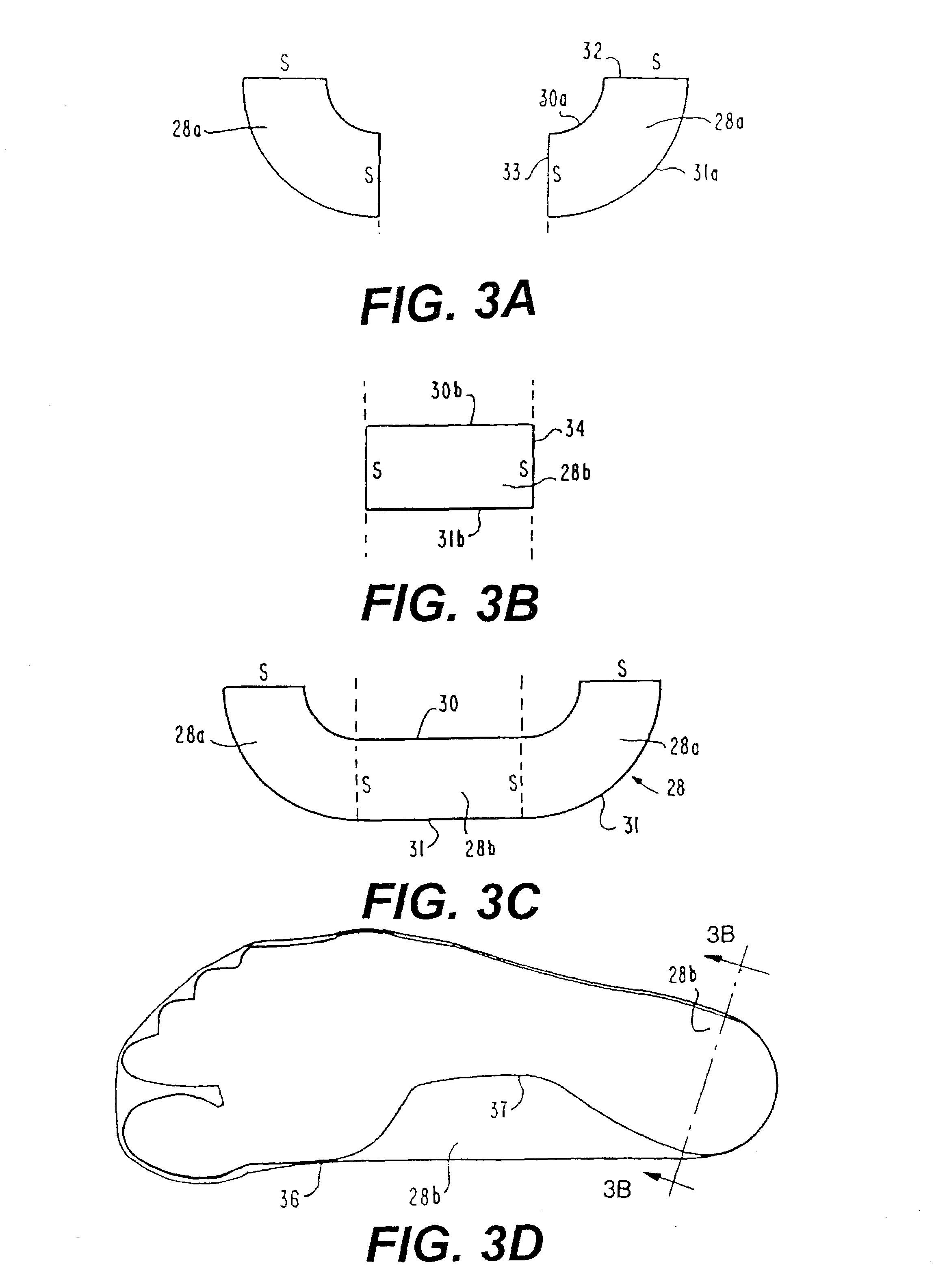Shoe sole with rounded inner and outer side surfaces
a technology of running shoes and side surfaces, applied in the field of running shoes with rounded soles, can solve the problems of lack of control or stability, extreme instability of shoes, and inability to move naturally, and achieve the effect of constant thickness of the shoe sole in the frontal planar cross section
- Summary
- Abstract
- Description
- Claims
- Application Information
AI Technical Summary
Benefits of technology
Problems solved by technology
Method used
Image
Examples
Embodiment Construction
[0033]A perspective view of an athletic shoe, such as a typical running shoe, according to the prior art, is shown in FIG. 1 wherein a running shoe 20 includes an upper portion 21 and a sole 22. Typically, such a sole includes a truncated outwardly flared construction, wherein the lower portion of the sole heel is significantly wider than the upper portion where the sole 22 joins the upper 21. A number of alternative sole designs are known to the art, including the design shown in U.S. Pat. No. 4,449,306 to Cavanagh wherein an outer portion of the sole of the running shoe includes a rounded portion having a radius of curvature of about 20 mm. The rounded portion lies along approximately the rear-half of the length of the outer side of the mid-sole and heel edge areas wherein the remaining border area is provided with a conventional flaring with the exception of a transition zone. The U.S. Pat. No. 4,557,059 to Misevich, also shows an athletic shoe having a contoured sole bottom in t...
PUM
 Login to View More
Login to View More Abstract
Description
Claims
Application Information
 Login to View More
Login to View More - R&D
- Intellectual Property
- Life Sciences
- Materials
- Tech Scout
- Unparalleled Data Quality
- Higher Quality Content
- 60% Fewer Hallucinations
Browse by: Latest US Patents, China's latest patents, Technical Efficacy Thesaurus, Application Domain, Technology Topic, Popular Technical Reports.
© 2025 PatSnap. All rights reserved.Legal|Privacy policy|Modern Slavery Act Transparency Statement|Sitemap|About US| Contact US: help@patsnap.com



